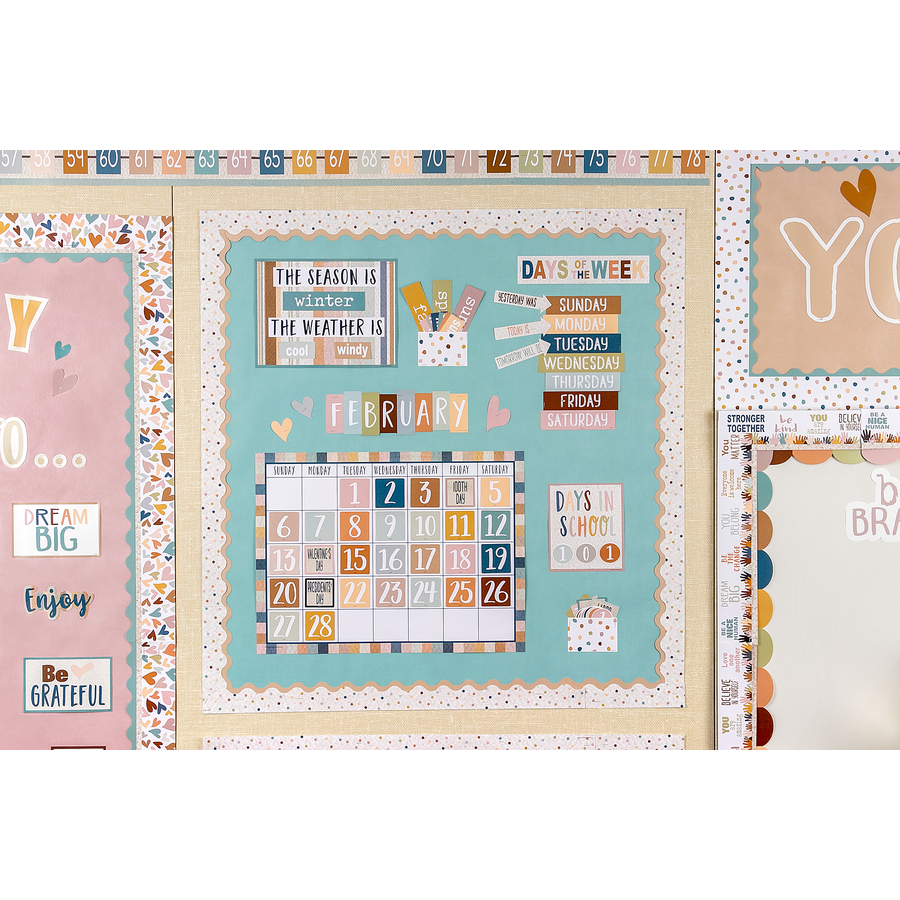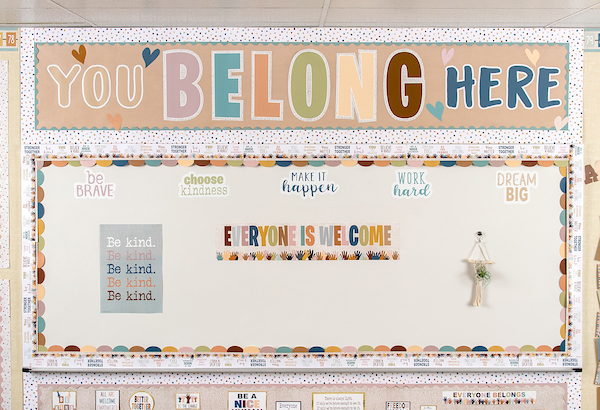Decorating a classroom is more than just arranging furniture and putting up posters; it’s about cultivating an environment that welcomes every student. In my years as an educator, I have seen firsthand how an inclusive decor can significantly impact students’ feelings of belonging and engagement. This comprehensive guide will walk you through the concepts, ideas, and practical steps for creating an “Everyone is Welcome” classroom decor that not only looks great but also fosters a positive learning atmosphere.
Understanding the Importance of Inclusive Classroom Decor
Creating a space where all students feel valued and accepted is paramount in education. But why is inclusive decor so essential?
Benefits of Inclusive Classroom Decor
- Promotes a sense of belonging
- Enhances student engagement and participation
- Encourages cultural awareness and sensitivity
- Supports diverse learning styles and needs
Personal Experience
During my first year of teaching, I decided to revamp my classroom decor to reflect a more inclusive environment. I incorporated multicultural artwork, multilingual signs, and furniture that accommodated all body types. The change was palpable; students who previously felt left out began to actively participate in discussions. The decor wasn’t just aesthetic—it helped create community.
Key Elements of Inclusive Classroom Decor
When designing your classroom, consider integrating these key elements that embody the “Everyone is Welcome” philosophy.
Cultural Representation
Utilizing decor that represents different cultures can make a significant impact. This could include:
- Art from diverse cultural backgrounds
- Posters featuring prominent figures from various communities
- Books and materials written in multiple languages
Comfortable and Accessible Furnishings
Ensure the classroom furniture meets the diverse needs of all students:
- Flexible seating options, like bean bags or floor cushions
- Adaptive desks that accommodate wheelchairs
- Areas for quiet reflection or group work
Positive Messaging and Affirmation Decor
Inspirational quotes and affirmations can uplift students:
- “Everyone belongs here!”
- “Your voice matters!”
- Visual reminders of classroom rules centered around respect and inclusion

Practical Steps to Achieve Inclusive Decor
Now that we’ve established the key elements, let’s delve into practical steps to implement inclusive decor in your classroom.
Step 1: Assess Your Space
Before making changes, assess your current decor and space. What elements are working, and what areas need improvement? Take notes on any particular challenges that might hinder inclusivity.

Step 2: Involve Your Students
Engage your students in the decor process. This not only empowers them but also provides valuable insights into what makes them feel included. Have brainstorming sessions where students can voice their ideas.
Step 3: Start Small
Consider starting small if budget constraints are an issue. Begin with one wall or corner and gradually expand your efforts. Focus on:
- Adding a cultural corner featuring artifacts or books from various cultures
- Creating a bulletin board that celebrates student work

Step 4: Use Technology
Technology can enhance classroom decor. Use digital displays to showcase student achievements, cultural events, or important announcements. This can create an engaging and dynamic environment.
Step 5: Evaluate and Adjust
After implementing changes, continuously evaluate your decor’s effectiveness. Compile feedback from students and adjust accordingly. What resonates? What needs to change?

Decor Ideas for an Inclusive Classroom
Looking for specific design ideas? Here’s a list of creative suggestions to inspire your classroom decor.
Wall Murals
Consider a large mural that depicts various cultures working together or famous landmarks from around the world. This visual representation can stimulate conversations about diversity.

International Flags Display
Hang flags from different countries around the room to foster a sense of global unity. You can even encourage students to contribute flags from their home countries.
Interactive Bulletin Boards
Design bulletin boards where students can add their contributions, such as favorite quotes or cultural stories. This turns a static space into a dynamic showcase of student voices.

Incorporate Nature and Comfort
Plants and soft textures can create a calming atmosphere. Create cozy reading nooks with pillows and books that reflect different cultures and experiences.
Comparison of Classroom Decor Styles
Understanding different styles can help you choose what best suits your inclusive decor vision. Below is a comparison table of popular decor styles and their characteristics:

| Style | Characteristics | Pros | Cons |
|---|---|---|---|
| Modern | Sleek lines, minimalistic | Clean aesthetic, promotes focus | Can feel sterile if not personalized |
| Bohemian | Eclectic, colorful, and layered | Inviting, promotes creativity | May be overwhelming if not balanced |
| Classic | Timeless designs, warm colors | Creates a traditional, sophisticated ambiance | May not appeal to all students |
| Eco-friendly | Natural materials, sustainability-focused | Promotes environmental awareness | Limited options can be a challenge |
Pros and Cons of Everyone is Welcome Classroom Decor
As with any decor approach, there are advantages and challenges to consider. Below is a breakdown to help you weigh your decisions:
Pros
- Fosters a sense of belonging among students
- Encourages participation and engagement
- Promotes understanding and acceptance of diversity
Cons
- Initial costs can be prohibitive
- Time-consuming to implement changes
- Requires continuous adaptation and assessment
Frequently Asked Questions (FAQs)
1. What are effective ways to promote inclusivity through decor?
Using multicultural materials, positive affirmations, and engaging students in the decor process are great ways to promote inclusivity.
2. How often should I update my classroom decor?
It’s beneficial to refresh decor at the start of each school year or semester, but also make small updates as necessary throughout the year based on student feedback and events.
3. Can I create an inclusive classroom decor on a budget?
Absolutely! Thrift stores, DIY projects, and student contributions can all help create beautiful and inclusive decor without breaking the bank.
4. What materials can help reinforce the inclusive theme?
Materials like bilingual signage, culturally diverse art, and resources that highlight different perspectives can enhance the inclusive theme.
5. How do I measure the effectiveness of my inclusive decor?
Regular feedback from students, observations of classroom engagement, and their sense of belonging are excellent indicators of the decor’s effectiveness.
Conclusion
Creating an “Everyone is Welcome” classroom decor is an enriching journey that benefits both educators and students. By prioritizing inclusivity, we prepare our students for a diverse world, enhancing their social and emotional growth. Remember, every little change counts, and together, we can create classrooms where everyone feels at home.